Yesterday I was talking with a friend about distant and faraway travels of our pasts, and the places we’d like to visit in the future. When I got home I remembered that it was at this exact time of year, in January 2015, that I visited Nepal, my first time to the Himalayan region of the world. Often Nepal is associated with its incredibly majestic nature, situated amongst the Himalayas with Mount Everest, the roof of the world nestled on its border. Though I did not go trekking the Annapurna circuit or base camp, my first experience was deeply rich and set the foundation for a future of intricate relationships and collaborations, as I was exposed to the culture and history, the people and infrastructure, the spirituality and the hospitality of the citizens of Nepal.
The main reason I wanted to go to Nepal and to this part of the world in general, was because of a longstanding relationship with Tibetan culture and its people. Very dear and close friends of mine had come from Tibet, growing up in Nepal or India, and I had never set foot over there, to this part of the world that had somehow become so much part of mine. Our family had been involved with Tibet since I was little, and as an adult I had become involved, too. I was on the Associate Board of Tibet House US and had performed many times at their annual benefit concert at Carnegie hall, I curated and co-hosted a monthly multimedia storytelling event at the Rubin Museum of Art (the Himalayan art museum in Manhattan) for almost three years, and helped other organizations such as Tibetan Home of Hope, and raised money with my friend Tenzin for Tibetan Children’s Villages(TCV). One of my closest friends and collaborators, Tenzin Choegyal, is a Tibetan musician exiled from his homeland, who resides in Brisbane, Australia. We have collaborated often together, released an album of music, and have traveled the world performing. He is a board member of Pathway to Paris, and one of the most frequent contributors and performers of our events and concerts over the years. He was so happy that I was traveling to Nepal, and gave me helpful insight and connections of friends to look for while I was there.
My memories of that trip are vast and powerful, from the expansive views of wild nature we stumbled upon, to intimate conversations with locals of the towns we stopped into. When we were in Kathmandu, we stayed in a monastery guest house, waking with the sunrise and attending the morning puja ritual, sipping butter tea and paying homage to the Buddhist deities. Everyone welcomed us there with such warmth and kindness. There was a very old dog who lived outside at the monastery, and I liked to visit him after the puja, shaking hands with his little paw, offering a few loving pats to his matted fur. My friend Jena made us little bowls of oatmeal with goji berries and chia seeds for breakfast. Lots of warm water. It was very cold during that time of year and it wasn’t often that we’d have access to a hot shower, and nearly as seldom to find an internet connection. I remember the very early mornings, bundled up with cups of hot tea on the wooden nightstand - white tea cups and saucers with sherbert orange stripes. The room was small and simple, and being there it felt impossible to want for anything more.

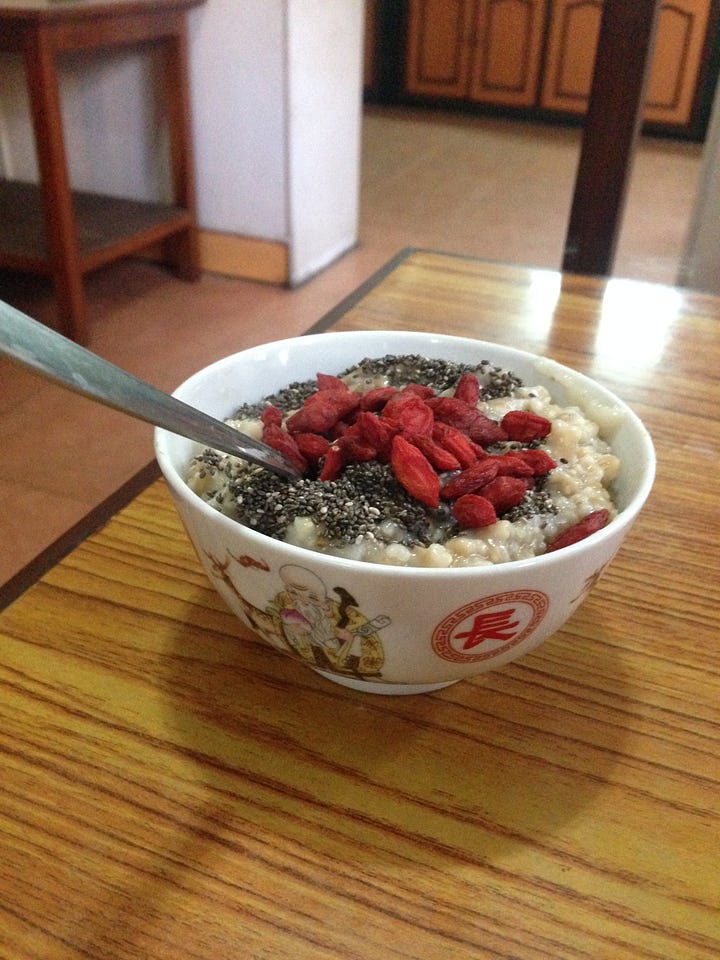
I loved my little bed at the monastery, a small single mattress with pink plaid and butter yellow bedding. A soft and feathery comforter to match. There usually wasn’t heat in the places we slept, and often I would sleep in my black puffy winter coat and hat. I don’t remember us ever being uncomfortable with the temperature though, just cozy and adapted somehow. I remember all the pages of the books I read in that room, on that trip. The words I wrote, the things I researched, the questions I pondered, the things we talked about. I really loved this book from the monastery library about prayer flags and their meanings. I had always loved prayer flags since I was a little girl, but I hadn’t ever stopped to learn about their history and tradition, the symbolism of the colors and designs, the different types of flags that exist. In Nepal, they hung everywhere, in yards over houses, outside the monastery, seen on trails and trekking, up close for purchase and blowing in the distant wind. You can see them on the mountains, they are everywhere.
A memory that might always feel like a surreal dream, was walking through the abundant layers of flags on the Boudhanath stupa in Kathmandu. I can picture those moments and am transported there now, remembering how joyful and alive it felt. The flags at Swayambunath, too. Something about that particular feeling reminds me of different things - the imagination and freeness of play as a child, or of being held close and lifted up by the boundless magic and wildness of nature. When you think about what these flags represent, it makes total sense that these immense and charged feelings would prevail, especially in that sacred space, on that hallowed ground.
The prayer flags blowing in the wind are meant to spread and share goodwill and compassion to everyone, to bring positive energy, harmony, and peace to all beings - to spread compassion through the wind into the space all around, to reach everyone. They’re not just hung with intention for the person themselves - the well wishes are for all. The flags are printed with symbols and mantras, and the colors of each are blue for the sky, white for the air, red for fire, green for water, and yellow for the earth. All together, they represent balance and harmony.
Being on the stupa, on this sacred UNESCO site, and feeling the breeze from those flags hung with positive intention and purpose, it’s no wonder that everyone there was overwhelmed with feelings of peace and balance. I remember moments of kindness and generosity among strangers, of quiet harmony and safety. Like being contained and held in the best way. I had my two cameras with me and I took film footage the whole time I was in Nepal, but my favorite film is from those visits to the stupas, the simplicity and beauty of the flags moving in the wind. The colors - some faded, some fresh. The different speeds of movement guided by the wind. I was so mesmerized by their dancing shapes and could have watched them forever. I brought the footage to my brilliant friend Jenn Ruff in NYC, and she cut them into a short film for me to watch, so I could revisit that moment anytime. I’ll have to share it sometime here with you all. Nobody else has ever seen it. I’m not the best with a camera so it’s very simple, but I think you will like it so much because the flags themselves are so remarkable.

One of my favorite places we visited in Nepal was a small mask shop run by a family who made these beautiful clay masks, painted by hand with vibrant colors and details. My friend and I spent many hours there, sitting on the floor looking through them all, talking in sparse and happy words with the warm hearted and welcoming family as they worked. We purchased many things there, gifts for friends and family back home, masks of all sizes depicting Green Tara, White Tara, Ganesh, butterflies. We paid the money for them, said our goodbyes, and looked forward to returning again someday.
We got back to NYC at the start of February, and on April 25, 2015, a devastating earthquake centralized in Nepal killed about 8510 people, injured nearly 22,000, and completely leveled entire villages, leaving hundreds of thousands suddenly homeless. The earthquake also triggered avalanches, killing many, and included aftershocks, killing many more. The photos of Kathmandu and surrounding villages after the earthquake showed seas of browns, grays, whites, debris and rubble in massive and seemingly endless piles, representing countless lives lost and turned upside down. Imagining the grief that coursed through the country, through the Himalayan region, that coursed through the world - it is overwhelming and completely immeasurable. Centuries old buildings and structures, places of worship, businesses, schools, houses and homes, all were destroyed. The great and iconic Boudhanath stupa suffered structural damage and required serious renovation. It is difficult to imagine a loss of this magnitude, and the country having to move so quickly into a survival and rebuilding strategy, to access their own resiliency, and to find hope among the devastation.
During the earthquake, the mask shop’s entire village was hit badly and leveled to the ground, so we only imagined that not only was the shop and all of its masks destroyed, but the entire family most likely was killed as well. I cherished the masks made by this family, and the small cloth bag with their name and logo printed on it. The large Green Tara mask I got from them always sits on my desk, and though I gave most of the others away as gifts, I kept two other small ones, a purple Ganesh and a White Tara. Ganesh, the remover of obstacles. White Tara, maternal compassion and healing. I would take them from my little box of Nepal things, unwrap them from the pieces of Nepalese newspaper they were stored in, and look at each one closely, thinking of the family who made them - their attention to detail, their intention with each one, their hope that someone might come into the shop and take one home. Their smiles and their welcoming warmth when we visited them. I am not a photographer, and sometimes I wish I had been one in those moments there, to document and remember the faces of each member of that beautiful family. Photographers always think of those things and take those chances in the moment.
I remember the day I woke up to the news of the earthquake. The shock and sadness hit so deeply, as the experience of the visit was still so fresh in our hearts. I didn’t know what to do, but I wanted to help somehow, even in the smallest of ways. With my friend and neighbor Ambrose Bye, we organized this Bandcamp fundraising page, Everest Awakening: A Prayer for Nepal and Beyond. We reached out to musician friends who eagerly donated music tracks to add, 83 in total. The site generated thousands of dollars which we sent to trusted friends working on the ground there.
Through that project I was able to make new friendships and connections with Nepalese artists, musicians, activists, writers, and environmentalists who became close and dear friends, collaborators and colleagues. Tsechu Dolma, who founded the Mountain Resiliency Project. Musicians and singers like Shyam Nepali and Raju Lama. And my dear friend Pema, who took Everest Awakening to the next level.
With Pema, we turned Everest Awakening into a full swing initiative that he directed with full attention and passion, expanding into many areas of earthquake relief, rebuilding strategies, and beyond, figuring out exactly what was needed and getting those things directly to the people. He incorporated areas like funding and supplies for orphanages and school children, adults in need, the homeless, the sick. Shelter for animals. Clothes and schoolbooks, new playgrounds, backpacks and toys. Sanitizer, masks, and gloves during Covid. Everest Awakening also sponsored a Nepalese Kayaking team which was really fun. It offered free dental exams, lunches and meals, made plates and bowls out of leaves, cups out of clay, blankets for the cold from recycled materials. Birthday parties for school children with cakes and treats, songs and hats. I was so continuously in awe of what Pema was able to pull together, the way he worked with individuals across the world to make things happen so quickly and effectively - the collaborative efforts of kindhearted and generous people.
One of my favorite initiatives, which continues today, is in partnership with the sherpa community and mountain guides of Nepal, dear friends of Pema who I have come to know as well. The project has trained many Everest summiters, helped and trained widows of Everest climbers, and has a high altitude Mountain Guide Photography course (launching a Nature Photography course too on January 27-29!). The certificate course trains climbers in digital photography, so they have the skills and equipment to document all that they see on their treks and climbs. The goal is to offer them tools to develop these new skills in photography as another source of income and to explore new creative projects. I’ve seen the results of these classes and am continuously blown away by their work.



At one point on our visit to Nepal, we left the monastery and made our way to a mountain village just a short distance from the city, and stayed at a small inn with a communal patio, overlooking the Himalayan mountains in the far distance, seeing them with my own eyes for the first time ever. The owner of the inn brought continuous pitchers of hot water with lemon and honey, and showed us old photos of the same view of the glaciers, explaining the ways they had changed over time due to the climate crisis, sharing his predictions of how it would continue to worsen. I learned about terrifying risk factors of mountain communities such as glacial outburst flooding, and I wrote our friend and mentor Bill McKibben a long and frantic email from the inn, asking what I should do, what Pathway to Paris should do. He wrote me back a message that has always stayed with me, that I think about often:
“Enjoy Kathmandu, and Nepal. You're seeing scenes that won't be there forever. It is sad in one way, but a big part of our job at the moment is to be witnesses to the fleeting.”
What Bill was saying was both heartbreaking and hugely important. It shifted my consciousness completely at that moment. Before the trips, after the trips, during the trips, we will be working, talking, advocating, organizing, raising awareness and funds, connecting and collaborating, being of service, demanding for justice, answers, and changes, writing and documenting, remembering and capturing, learning what needs to be learned. But we also *need* to appreciate and experience what is in front of us - the absolute majesty in front of our eyes, the aliveness of nature, the very thing we are fighting for. To take it in fully, whole heartedly, and not to miss it - not to miss this once in a lifetime moment of seeing it by trying to save it somehow. Bill always guides us straight to work, directly to action, he’s the first to give a list of urgent tasks and people to connect with, articles and data to read and organizations whose work to support. But I think he was worried for a moment that I would miss this very special chance to experience Nepal while I was there, sitting on the balcony with Everest in front of my eyes, as if to say, ‘you will do the work, you are doing the work, but sometimes, just sometimes, we have to remember to live.’
I mentioned this story because I was thinking about the sherpas and the mountain guides, in particular Ang Tshering Lama, who I came to know through Pema, and who I have learned so much through admiring him and his work from afar. Seeing his photography and film, hearing the stories and observations, all that the mountain guides have seen over the years - they are the ones who see the changes to the landscapes the closest - they are true witnesses to the fleeting.
Here in this photo is another mountain guide, Onje Sherpa, at the summit of Mount Everest with our Everest Awakening flag. I have this very flag in my room, along with the Pathway to Paris flag that Ang brought, and it’s incredible to imagine they were once in Ang and Onje’s backpacks, making their way up the whole of the mountain, and residing there at its peak, on the roof of the world within their hands. I remember both of these separate moments - of receiving these photos in complete awe, looking at them on my little phone and imagining where and how they were taken. I am still so much in awe for countless reasons, and so thankful for this kind gesture.
In 2015, we organized a fundraising concert in New York at City Winery for Everest Awakening, raising over $26k for earthquake relief. We also had an event called, ‘To Nepal with Love’ where Nepalese poets and writers shared their work, Nepalese musicians and singers shared their songs, and artist Sonam Rinzin did a live thangka drawing during the performance, one of the Rubin Museum’s top 5 events of 2015. In our work with Pathway to Paris, Tenzin Choegyal has always made certain that we speak about the Himalaya, and Mount Everest, the ‘roof of the world.’ I will share part 2 of this post soon, with videos and photos of our ‘roof of the world’ action pledge taken at nearly every Pathway to Paris event, more about my collaborations with Tenzin, and other actions, too.
There is really so much more I want to write and share about Nepal, about each of the people I met during this time of my life, about the landscape and the mountains, about the music and the culture, and I will continue to go more into details and depth about different aspects as the months and these posts continue.
For now, I’ll share with you a few more photos from my trip to Nepal. I like them because they remind me of the stillness and peace of the monastery and the village, the quietness and vast silence of walks through the surrounding nature. I can look at these photos and smell the air, the scent of incense and tea, and the scent of the ground, the nature, and trees. Maybe someday I will return there again. Maybe on a trip with Tenzin. I’ll post my film of the prayer flags too, a simple moment to share with you all.
I also want to close by saying that I took the little cloth bag out just now with the name of the mask shop printed on it. A few of the letters had faded, but I was able to look up their name online. I found that they started an Instagram account in 2017, and though they haven’t posted since 2021, I wrote them a message. I also wrote them an email, too. So there is hope that the family survived and the mask shop continues. <3
Have you been to Nepal? Or does this post remind you of a place you’ve visited before or a place you’d like to go?






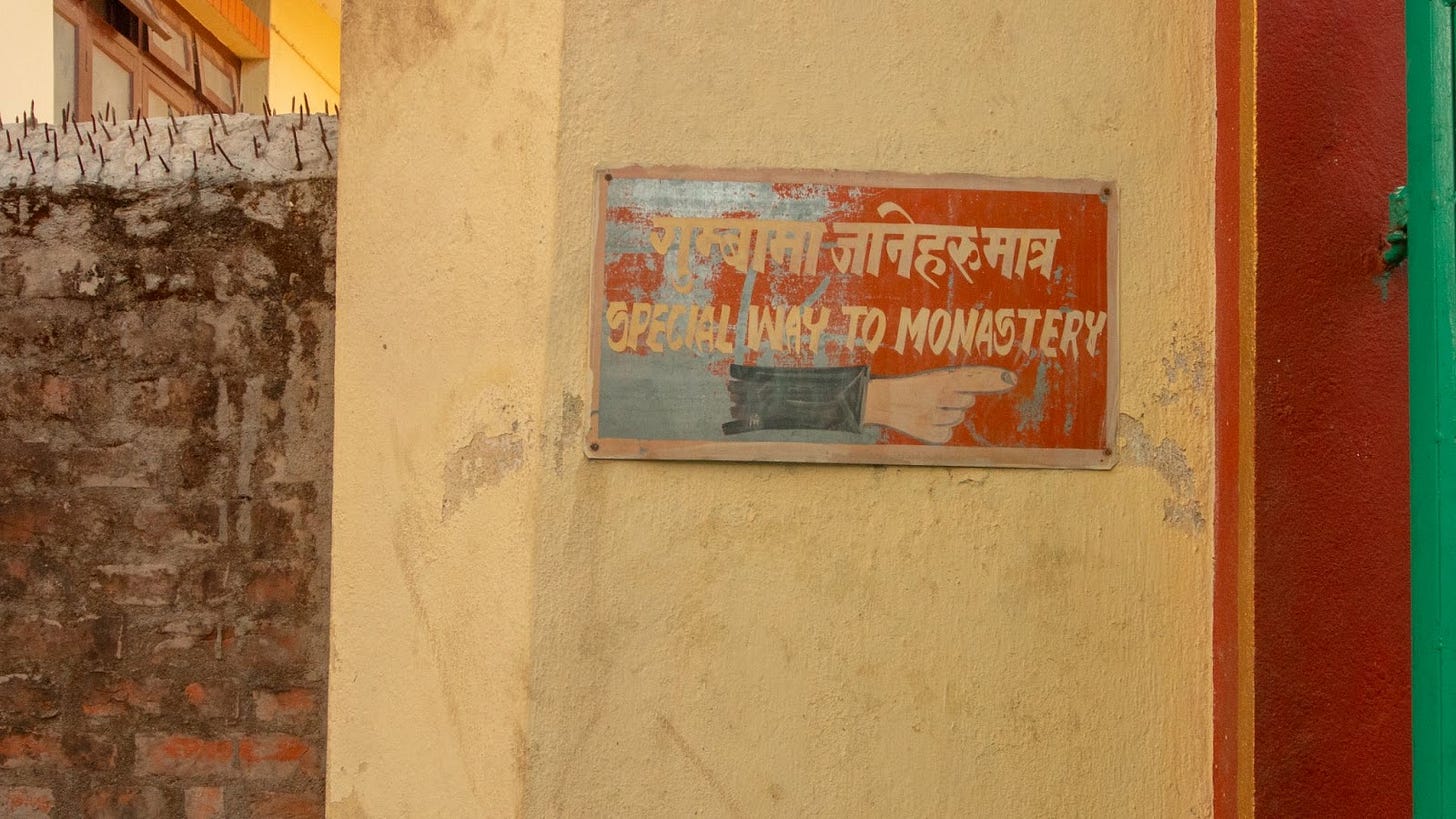
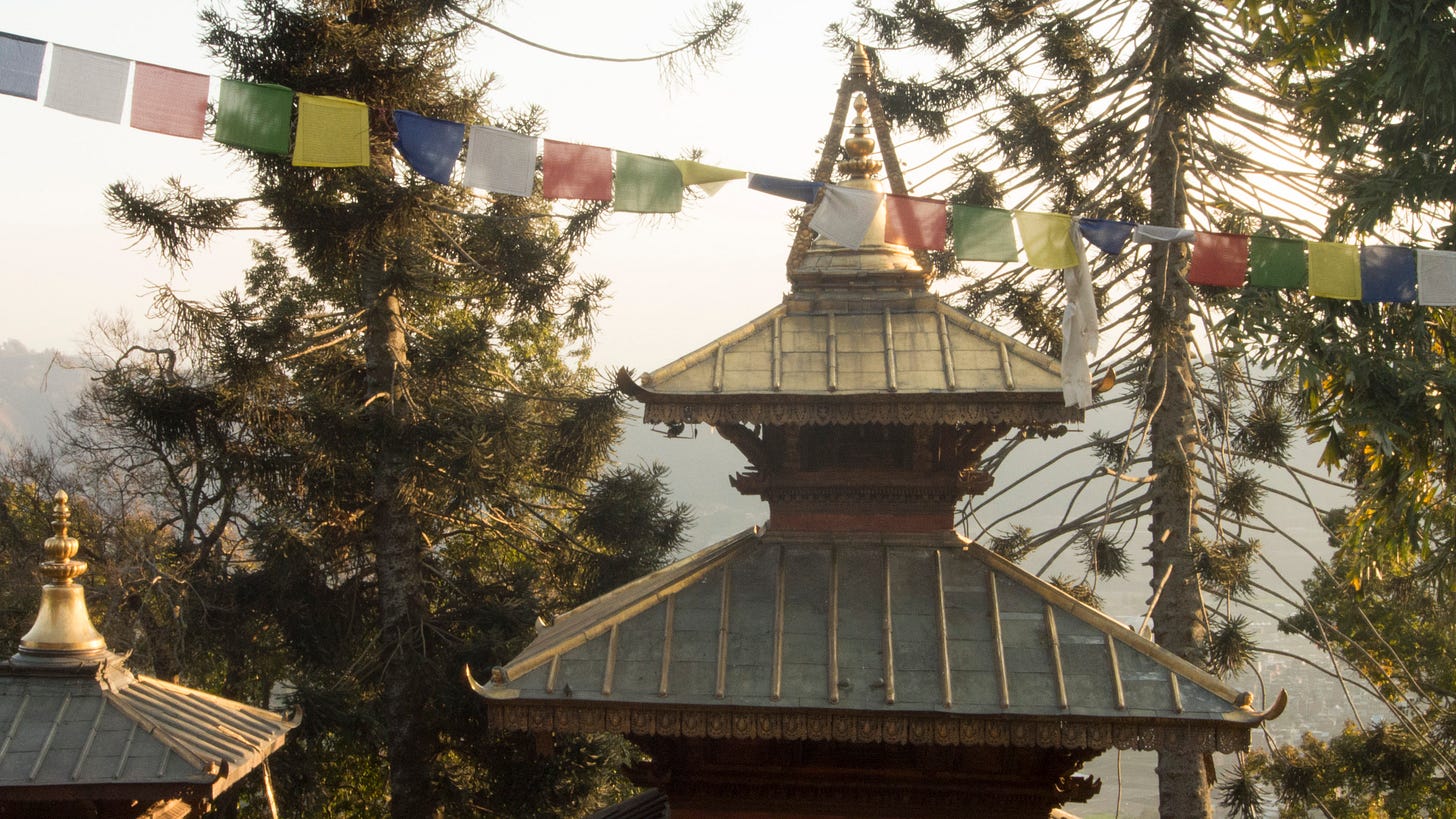
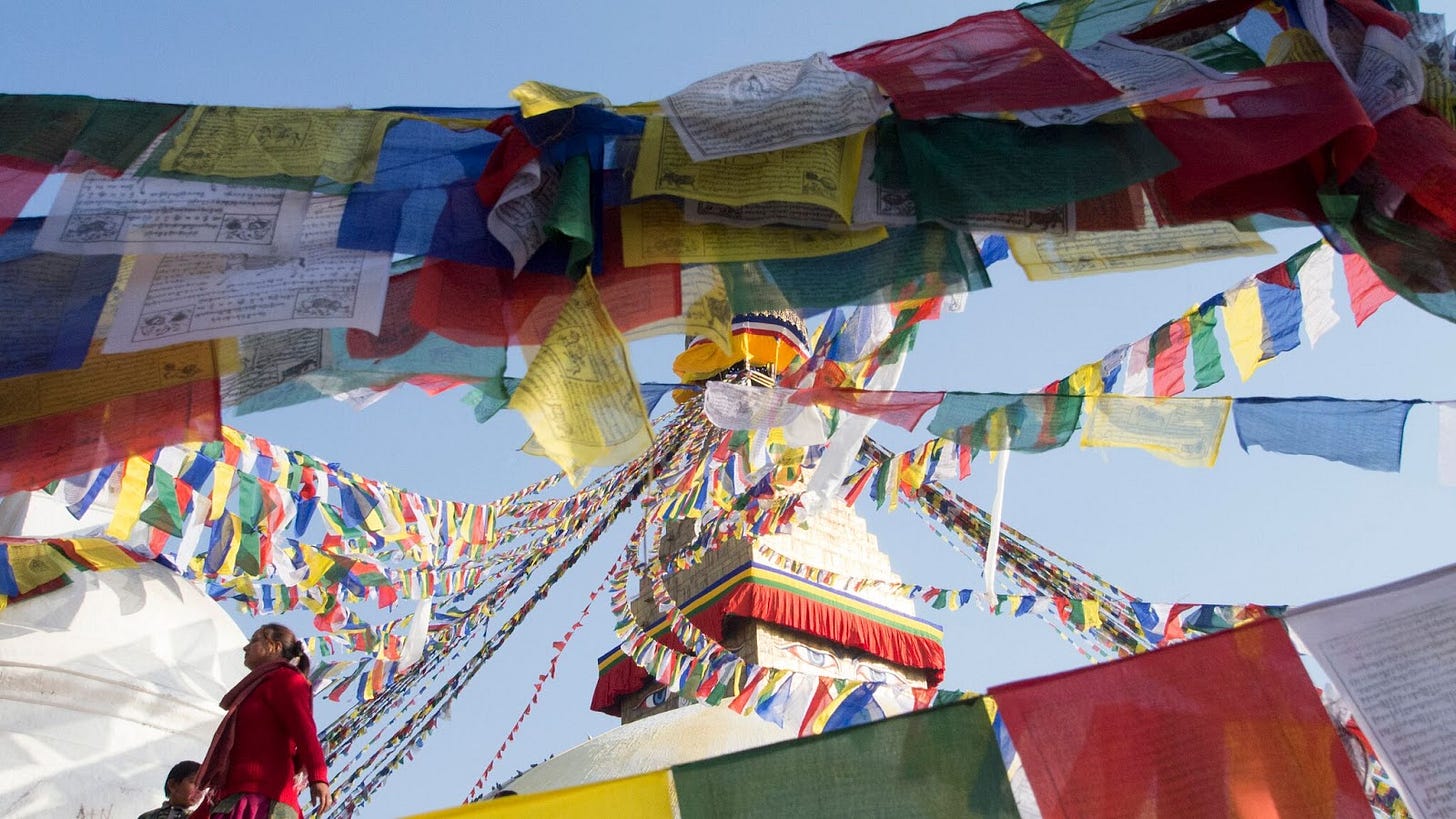
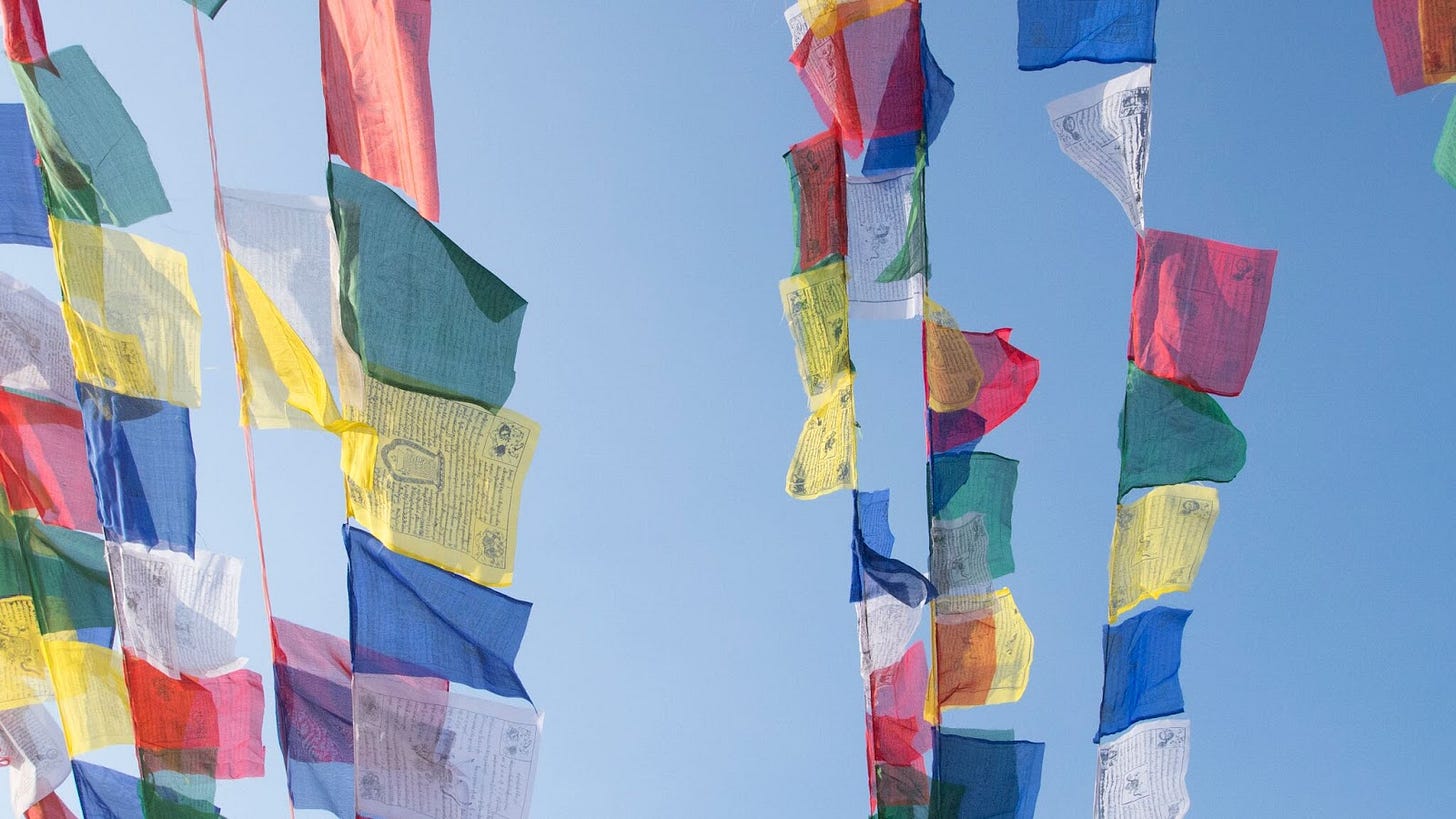
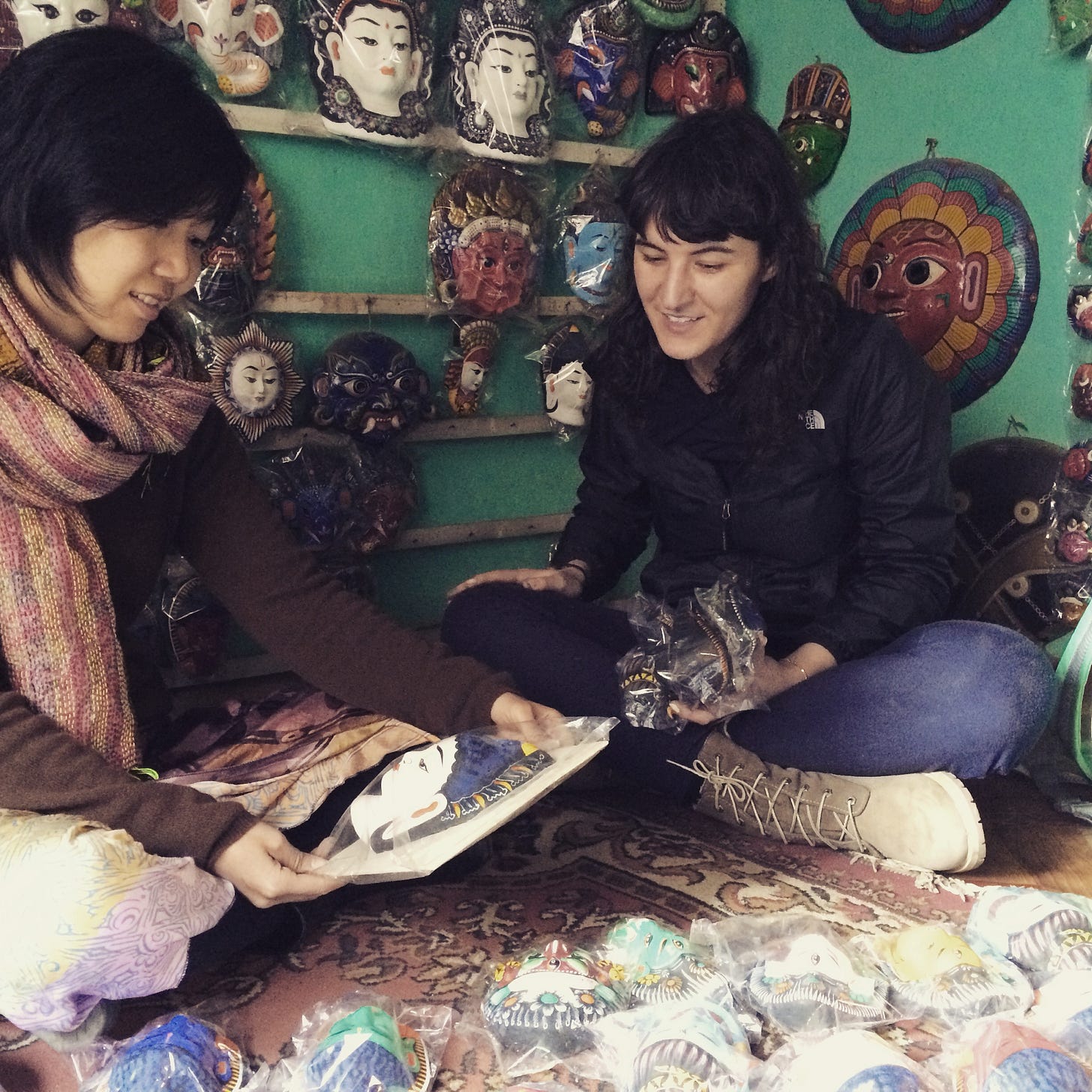

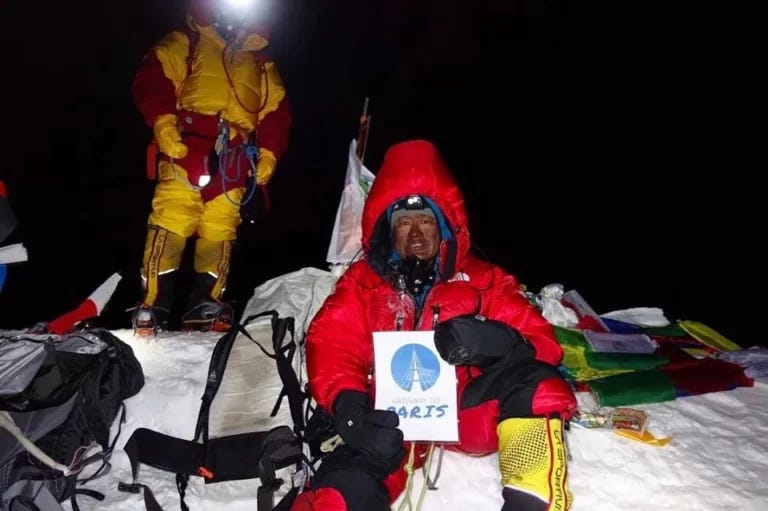
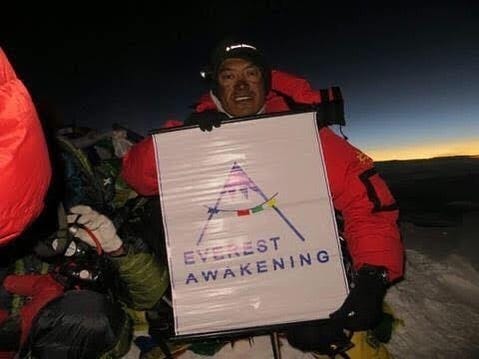

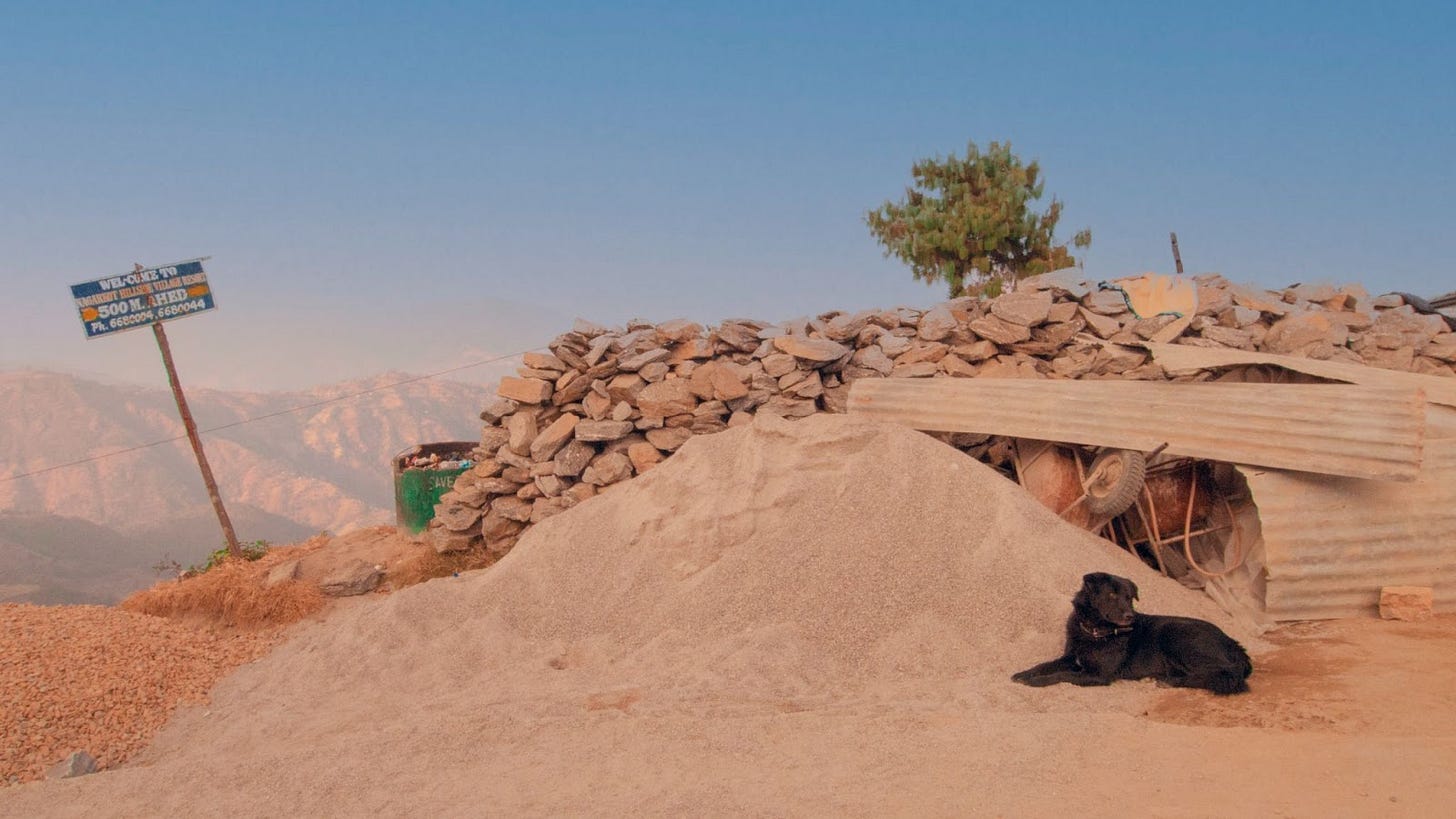
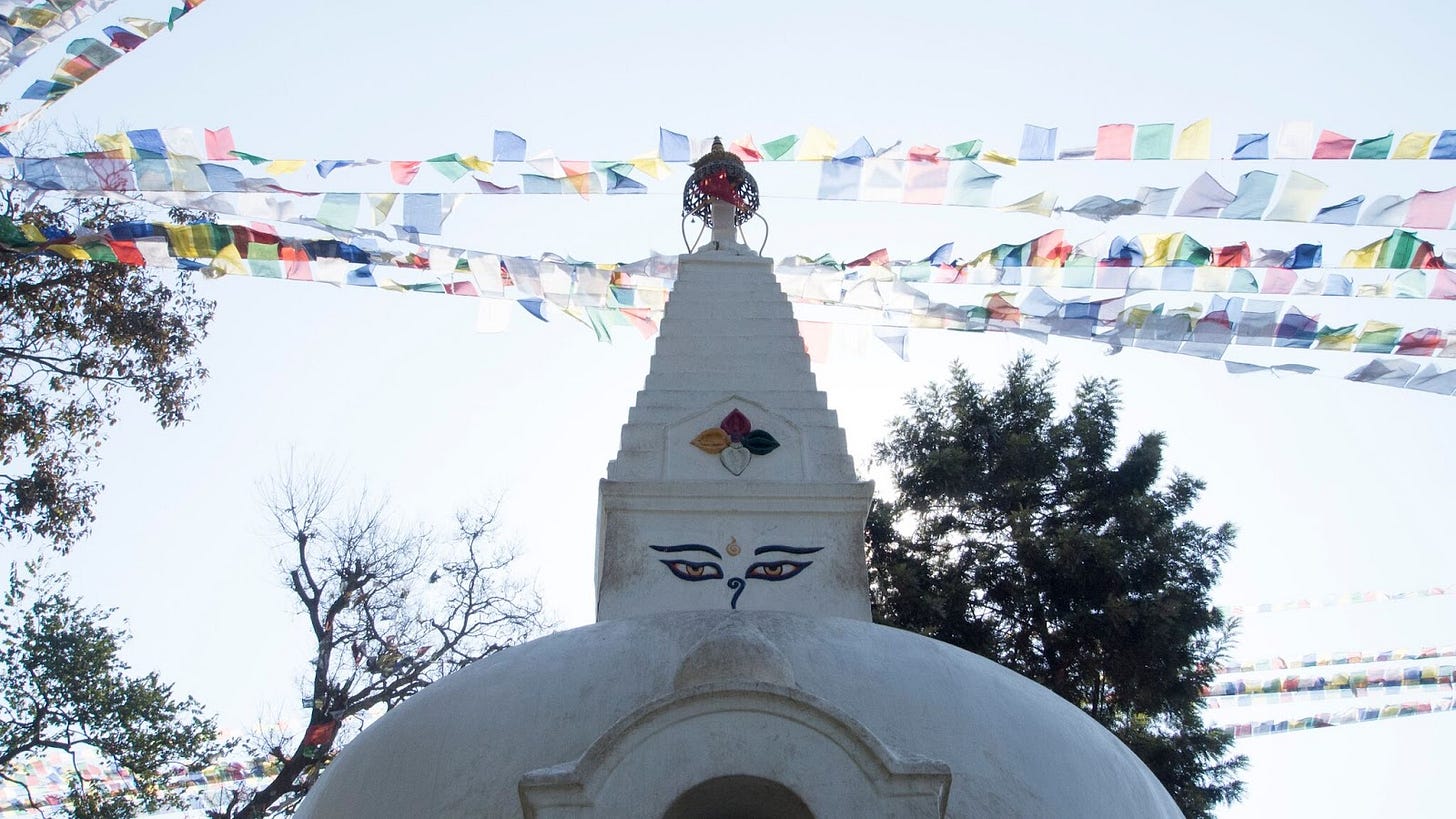

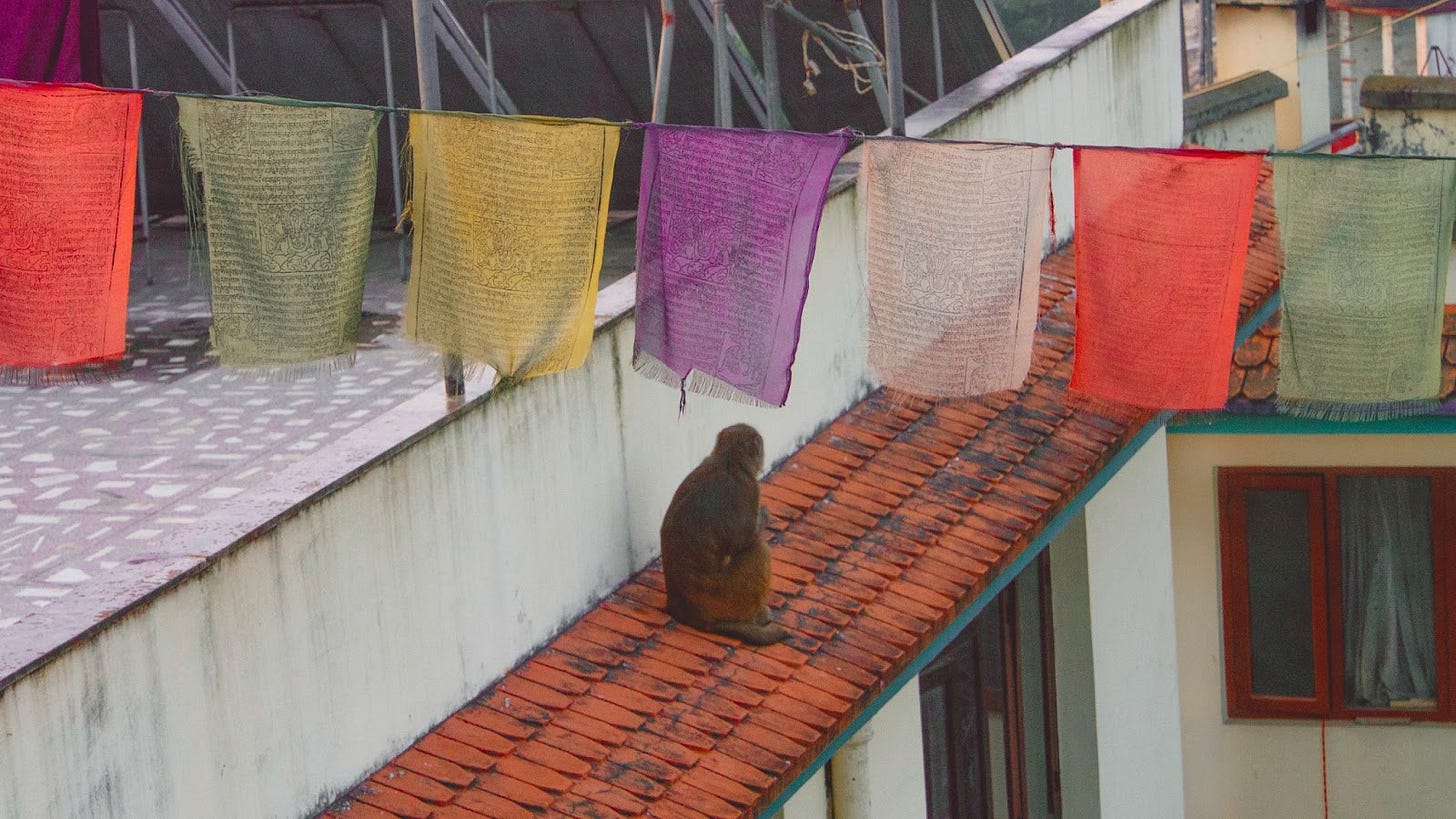

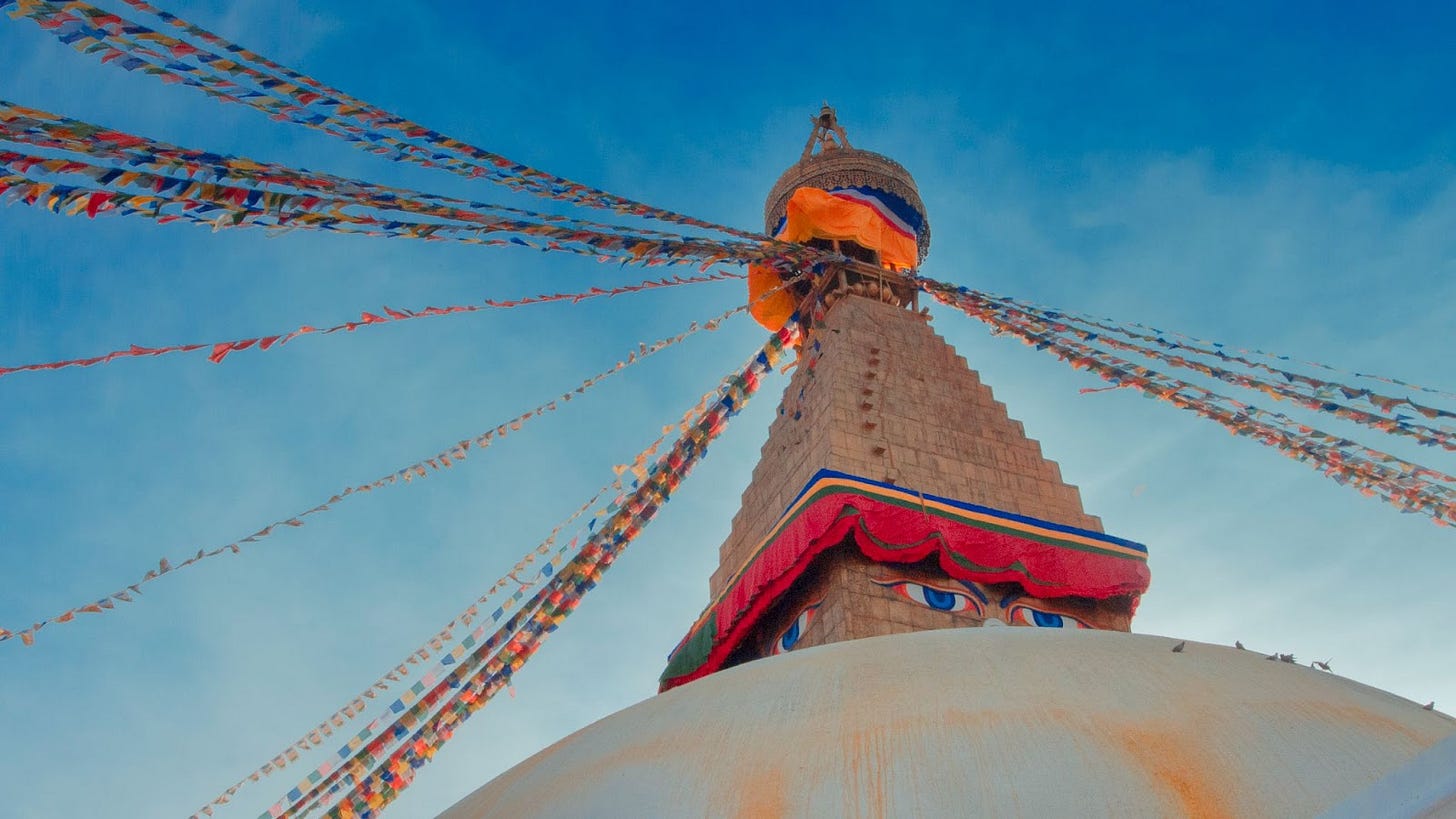
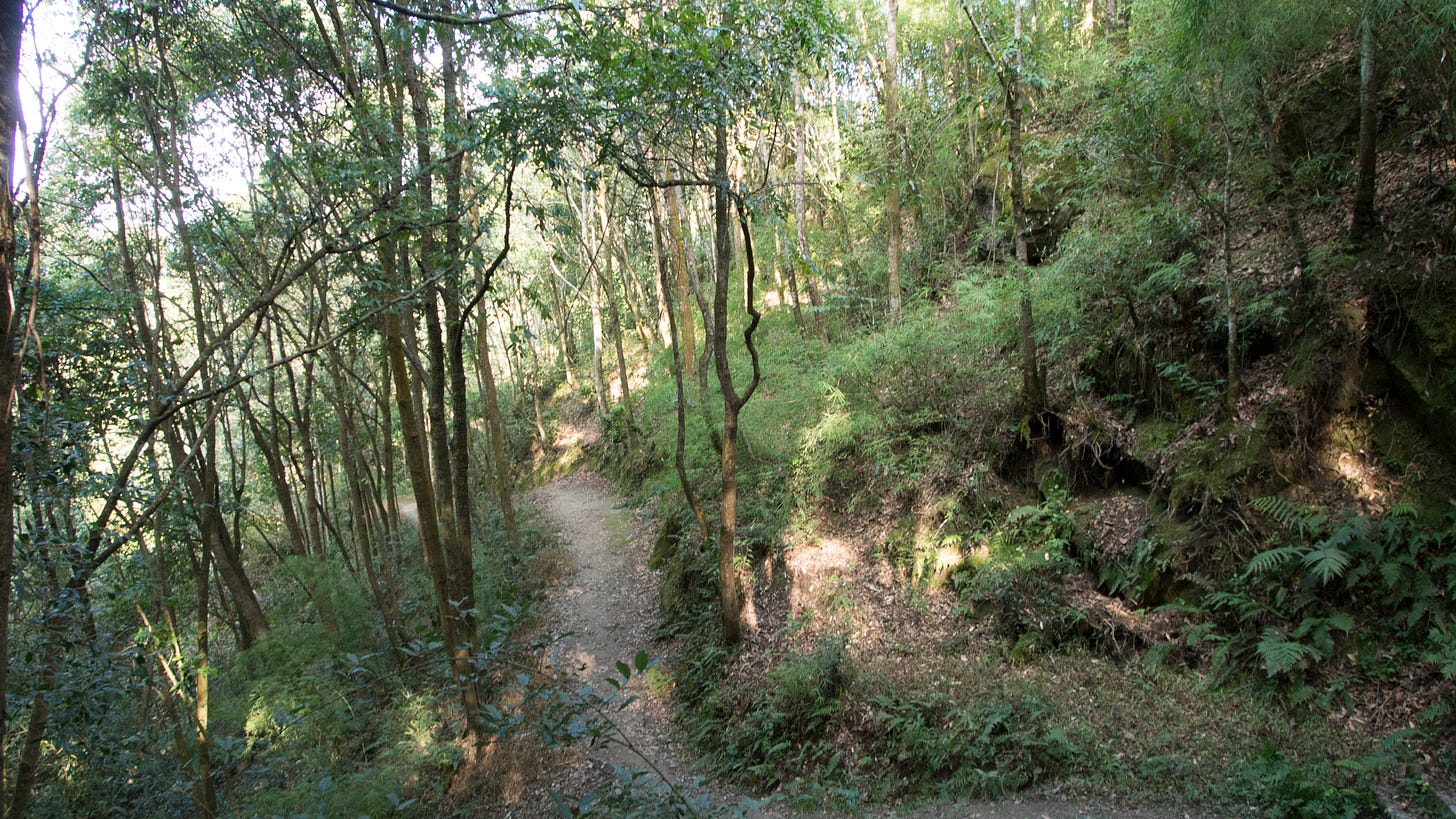

This is wonderful in every respect. I am hoping you receive a message from the family who had the Mask store. Your reminiscences reminds me of a long ago dream to go to Nepal. I never did, and am so grateful you made your own beautifully challenging journey and shared it with us.
Jesse, In a post on your mom's substack I mentioned that you moved at the speed of light. Well
you write at that speed - layers of thoughts, ideas and experiences too numerous to contain. For
that reason I'll go back and reread to catch what I missed on the first go round. I've never had the
good fortune to travel to Nepal - but there's a book, one of my old favorites, called The Snow Leopard by Peter Matthiessen. I believe it was written in the late 60's before trekking the HImalayas became
so popular. When you'd trek for miles into the farthest reaches without seeing another person, except
maybe a sherpa or someone traveling to a far away village. The higher he climbed, the distance
between modern world and this "other" world made for some stark observations. It was an eye
opener for me. Now I'll pull it off the shelf to experience it once again. Thank you.